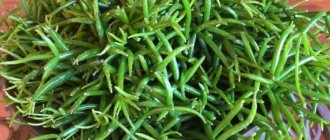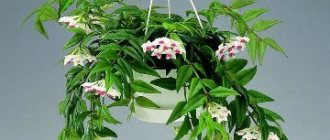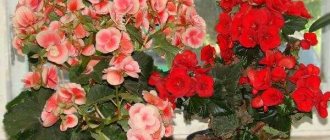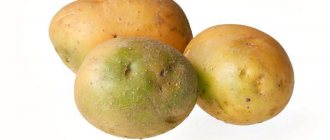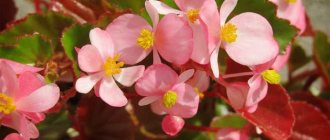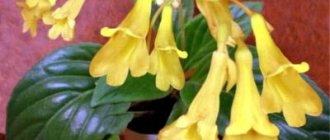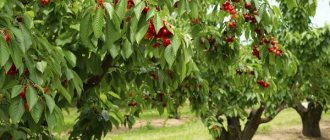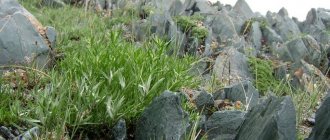Loading…
Loading…
Chlorophytum is a perennial herbaceous plant growing up to half a meter in height. It has practically no stem, looks like ordinary grass. The beneficial properties of chlorophytum include natural air purification: it effectively fights indoor household pollution and kills harmful bacteria.
Chlorophytum is familiar to many people from their school days. He was often observed growing in every class and other audience. Similar to outdoor grass, only with long, wide leaves with a light stripe down the middle.
Even in the last century, such plants were planted in children's institutions due to their ease of care and tolerance of sudden temperature changes. This flower easily tolerates a lack of moisture and does not require special care rules.
Useful properties of chlorophytum
In addition to the enormous benefits that can be obtained from the plant, chlorophytum fits well into any room. It is planted in pots on window sills and looks good on a regular shelf. The pleasant color of its leaves goes well with any decorated room and can grow in darkened corners of the apartment. The plant is not afraid of dry air, lack of moisture, and untimely care.
The flower is characterized by rapid growth, active reproduction, and is relatively inexpensive.
Home benefits:
- decorates the house: matches any decorated room;
- chlorophytum is useful for allergy sufferers and people suffering from pulmonary diseases;
- improves air quality: cleans it of dust and germs.
What is the benefit
A flower grown in the kitchen actively fights harmful fumes from gas combustion. The purpose of chlorophytum is to release oxygen and establish a microclimate in the house. It is not afraid of being in too hot rooms; pots with plants can be placed near a double boiler and even an oven.
Chlorophytum can grow in any conditions, which is not typical for many indoor plants.
In addition to good oxygen delivery, chlorophytum is useful for its ability to humidify the air in the room. It is an excellent alternative to expensive air humidifiers.
For a long time, the indoor flower has been studied by botanists. As a result of these activities, it was found that the plant is actively fighting harmful microorganisms that live in the air. It has also been proven that in order to enhance its antimicrobial effect, it is necessary to plant it close to geranium, and at the same time use aroma lamps in the house with the addition of lemongrass essential oil. Together, this gives an effective antimicrobial effect that cleans the air well.
Due to the fact that the plant fights dust well, chlorophytum is often planted on window sills, loggias and in places where windows are constantly open. By installing chlorophytum on your windowsill, you will notice that there will be much less dust and dirt.
But if we talk about the practice of Feng Shui, the Chinese claim that this plant fights bad energy in the house. And if you give such a flower to a person who works a lot and does not devote time to everyday life, then supposedly, he will finally pay attention to other aspects of his life besides work. Chlorophytum brings harmony, coziness and comfort to the house.
Features of indoor Chlorophytum
The plant was brought to Europe more than 200 years ago, and has not lost popularity since then. Origin: subtropical forests of South America and Africa. Literally translated as “green plant”.
Description of the plant
It has long, up to 60 cm, narrow leaves with pointed ends of light green color. There are varieties with white or yellow stripes. Collected into sockets. In large containers it can grow up to half a meter. It is a herbaceous perennial.
The roots are short, thickened, tuberous. The flower accumulates moisture in them, which helps it withstand a long period without watering. Some leaves may die off during drought, then when moisture appears, they grow back.
The peculiarity of chlorophytum is the children hanging at the ends of long mustaches; if you do not remove them, you get a beautiful cascade. The flowers are small, white, and have no decorative value; after they bloom, the fruits are capsules. Seeds are formed quite easily at home, but they are not used for propagation.
In recent years, several interesting varieties have been developed:
- Chlorophytum Bonnie, or curly, has twisted leaves that give the plant an unusual decorative appearance;
- Chlorophytum crested is the most common, it is also less whimsical;
- Chlorophytum orange;
- Laxum is rare in the collection, does not form rosettes, and is propagated by seeds.
Chlorophytum is grown in hanging pots and used to decorate winter gardens, as part of a composition next to other plants.
Benefits and harms
We are forced to spend most of our time indoors. We breathe dust, carbon dioxide, fumes from furniture and household appliances. All this negatively affects our well-being, causing weakness and headaches.
Indoor plants are a kind of filter that help improve the microclimate. Chlorophytum is unique in this regard. It, like a sponge, absorbs harmful substances, thereby purifying the air. It is especially useful in the kitchen, as it removes combustion products from the air.
Reference! If this flower grows well, then you should pay attention to the pollution in the room. The effect is achieved by the presence of a large number of stomata on the leaves, plus a large suction surface area.
Chlorophytum absorbs:
- formaldehyde;
- carbon monoxide;
- benzene;
- ammonia;
- acetone.
If the room area is 20 square meters, then you will need about 10 plants to purify the air by 80%.
If we turn to esotericism and Feng Shui, then Chlorophytum is a source of positive energy. This is a yang plant, so it should be kept in the male area: office, living room.
Poisonous or not?
The plant is considered completely harmless. It does not emit allergens and is not poisonous. It can be kept in children's rooms and educational institutions.
Young children may also be tempted to try the plant. This will not cause any particular harm, but it is still better to protect the child from eating the flower. In addition, its leaves are harsh, and there is a possibility of injuring delicate skin.
Spider Plant (Chlorophytum) in blue glazed pot on wood stand at window
What it absorbs, Chlorophytum uses to build its own cells.
Important: an aqueous solution of this plant can still cause poisoning, so you should not consume it internally.
The plant juice does not contain poisons, so you can safely work with it without gloves.
Harm of chlorophytum
There is an opinion that chlorophytum is harmful to cats. Many consider it a poisonous plant because after a cat eats it, it develops a gag reflex.
In fact, the animal uses it like regular grass in order to cleanse its body, for example, of hairballs. Constantly licking itself, the cat swallows a lot of hair, which completely clogs its stomach. If the animal is domestic, it will eat such plants in order to rid its stomach of excess. If the cat goes outside, he will eat ordinary grass to solve the same problems, which the owner may not even know about. Therefore, the belief that chlorophytum is harmful to cats is incorrect, it is a myth.
The only thing that is not recommended is to allow a small child to try the plant. Leaves that are too hard cause injury to the mucous membranes, so chlorophytum should be kept at home away from places accessible to children.
The flower can be grown in the kitchen, kept away from children.
Is the flower dangerous?
Single cases of using the plant are not dangerous for the animal.
Studies have shown that, despite the hallucinogenic effect of the flower on the cat’s body, the plant is considered safe for cats. Additional research by specialists from the American Society for the Prevention of Cruelty to Animals revealed that Chlorophytum crested is not poisonous and therefore will not harm felines of any breed. However, if consumed regularly in uncontrolled quantities, chlorophytum is dangerous, as it can provoke:
- vomiting;
- upset stomach and intestines;
- diarrhea;
- dehydration.
Therefore, chlorophytum crested is harmful only in large quantities. Nevertheless, veterinarians recommend weaning the animal from eating the leaves of the plant, explaining this by the fact that each cat’s body functions differently, so it is impossible to predict which flower will be poisonous and cause severe disturbances in the digestive tract, and which will not have a negative effect.
Varieties of chlorophytum
Chlorophytum has more than 200 species, but most often Chlorophytum crested is used for growing indoors.
Chlorophytum crested beneficial properties
Crested chlorophytum is an indoor perennial with narrow, long leaves. It has bright foliage, collected in a symmetrical rosette up to half a meter in diameter.
The beneficial properties of chlorophytum crested lie in its cleansing properties. Often, in a closed space, the air accumulates enough bad fumes and substances: cigarette smoke, detergents, exhaust gases that come from the street. The plant also copes with dry air and radiation from electrical appliances. In fact, many plants help cope with these problems, but chlorophytum still takes first place among them.
By planting such a flower in your home, you don’t have to use expensive air purifiers.
What to do?
To discourage your furry pet from eating chlorophytum, experienced breeders recommend several methods:
- Keep the flower out of reach. Since the plant is intended for hanging baskets, no one is stopping the owner from hanging it higher, out of reach for the cat. It is important to avoid placing a flower pot on a windowsill or cabinet, or above other furniture.
- Use repellers. Pet stores offer special sprays with repellent odors, or you can make your own solution from citrus fruits. To repel the cat, just spray the product over the chlorophytum.
- Trimming. If the plant has grown so much that the spider rosettes are hanging down and “dragonizing” the cat, then it is recommended to simply cut them off.
- Replacement. To distract your furry pet from chlorophytum, it is worth growing a special grass that he will chew with greater pleasure.
- Diet. If the purr begins to pay attention to all the plants in the house, including chlorophytum, it is worth reviewing the diet. You may need to change the food or diversify the menu.
Veterinarians warn that if no methods help to keep the cat away from the flower, and the desire to gnaw on the juicy leaves only grows, you should still go to the veterinary clinic and undergo an examination. Perhaps it’s not just a vitamin deficiency, but a dangerous illness is developing in the cat’s body that requires urgent treatment.
Benefits for people
Chlorophytum gives off most of its beneficial properties when watered. Taking in moisture, the flower releases air enriched with phytoncides into the room. And this is very useful for people who have pulmonary pathologies. The plant is also useful for planting for allergy sufferers and people who often suffer from colds.
Another useful property of the plant is to absorb ammonia, nitrogen, formaldehyde, acetone, and carbon monoxide. Therefore, it is very difficult to do without such a plant if a person lives near the roadway.
Read more about why cats love chlorophytum
Chlorophytum comosum or chlorophytum crested is often planted by housewives in their apartments, because the plant is easy to care for and looks beautiful in hanging pots. But in addition to aesthetic pleasure for people, cats also like the flower. More often, the reason for the manifestation of a furry pet’s peculiar “love” for chlorophytum is its mischievous character. Cats love to bite and tear at things that hang down and sway from their touch; in fact, this is what happens with the spider rosettes of a flower when their furry paws touch it. That is, the main problem is the cat’s playfulness.
Due to the peculiar structure of the digestive tract, purrs have a developed gag reflex, which allows them to cleanse the body of scraps of fur that enter the stomach after licking. Sometimes additional external influence is required to cleanse the gastrointestinal tract, so cats begin to eat natural stimulants, which include chlorophytum.
Cats like the smell emitted by chlorophytum, which has a weak hallucinogenic effect. Veterinarians compare it to another plant: catnip. This aroma stimulates the purr’s sense of smell and affects the cat’s behavior, encouraging him to play actively.
Care
The flower does not require special care. It can go without watering for a long time, and has the ability to recover quickly if it is started.
Despite the fact that chlorophytum can live for a long time without water, it still needs it. Gives plants beneficial properties precisely after regular watering. In summer, the flower requires more moisture, so watering is carried out abundantly. In the cold season it must be reduced. You should be careful with the liquid so as not to overwater the plant, otherwise it will cause rotting of the root system.
If the ends of the leaves of chlorophytum begin to darken, they are cut off with scissors, and soon the plant again takes on a luxurious appearance. Periodically, the leaves of the plant can be sprayed with a spray bottle.
Due to the peculiar structure of chlorophytum leaves, dirt and dust accumulate in their hollows, therefore, if possible, it is recommended to wipe the leaves with a damp cloth.
Plants do not require any special lighting, so a pot with chlorophytum can be installed in any convenient place.
Chlorophytum is a houseplant that is very important to have in every home. This is especially true for people living in contaminated areas. Chlorophytum does no harm at all, but its benefits are quite great.
The ease of care and inexpensive cost of the flower allows everyone to purchase it. Therefore, if there is a choice between chlorophytum and another plant, then it is better to give preference to it.
Houseplants that are dangerous for cats
Many cats love to eat indoor plants, and owners think that cats are smart enough to determine which plants are useful to them and which are harmful or even life-threatening, but this is not so. Sometimes cats are completely indiscriminate in their taste for flowers.
Harmful, dangerous and poisonous plants for cats
Azaleas
, undoubtedly, very beautiful indoor plants, loved by many housewives for their bright, voluminous flowers, but in cats they cause vomiting, diarrhea and convulsions, and if eaten regularly they can cause pulmonary, kidney or heart failure. Such problems also occur when eating asparagus, ivy or cyperus.
Amaryllidaceae
– the most striking representatives of this family: Hippeastrum zephyranthes, eupharis. These plants can cause allergic dermatitis, vomiting, gastrointestinal upset, seizures, and in some cases damage to the nervous system.
Aroid
(Dieffenbachia, aglaonema, anthurium, zamioculcas, caladium, monstera, spathiphyllum, syngonium, philodendron) - these plants, as well as the juice of all begonias, contain oxalic acid, which causes burns to the mucous membranes of the mouth and pharynx. Such lesions are accompanied by swelling; in severe cases, it blocks the supply of oxygen and can lead to suffocation. If the juice gets into the eyes, conjunctivitis and irreversible damage to the cornea develop.
Geranium
(especially the leaves of plants with red flowers) cause digestive upset.
Flowers of the Kutrov family
(oleander, mandevilla, catharanthus) cannot be called the most common, but every cat lover should know about them. The leaves of these plants contain a huge amount of glycosides and alkaloids, which, in addition to vomiting and diarrhea, can cause nervous disorders and cardiac dysfunction, including cardiac arrest.
Evergreen boxwood is also very dangerous for cats.
it causes severe intoxication. There are cases of death.
Chlorophytum
in principle, it is safe, but some murks develop allergic skin rashes after eating striped leaves.
Euphorbia
– there are more than 1,500 species of these plants, the most popular in home gardening: croton, Christmas star, poinsettia, milkweed, ficus. All these plants secrete a milky sap that contains the toxic substance euphorbine. It causes burns to mucous membranes, and if it gets into the eyes, it can cause blindness. In some cases, it leads to nervous system disorders and severe diarrhea.
What to do if your cat eats plants but doesn’t want to part with them
To stop your cat from chewing leaves, you can dilute a little lemon juice in water or infuse orange peels and spray the plant with the solution. The bright citrus aroma will scare away your pet, but in return you need to offer him special sprouted grass, ordinary millet or oats, which he can and should enjoy to his own pleasure.
First aid for poisoning
It happens that cats chew potentially dangerous plants for many years and this does not cause any visible changes in the functioning of the body, but for some animals, especially those with a weak digestive system, a few leaves are enough to become poisoned. If this happens, the owner urgently needs to rinse the pet’s mouth, give activated charcoal and take the animal to the veterinarian.
Chlorophytum
Chlorophytum, or comosum, is a rosette-type perennial subshrub with arched stems and feather-like leaves hanging under its own weight. Under natural conditions, the flower grows in forest areas of Western Australia. Chlorophytum is absolutely harmless to all pets, even in case of accidental ingestion. The plant belongs to the light-loving types. The room should have bright daylight, but still protect its delicate leaves from direct burning sunlight. From the end of March until September, komosum requires abundant watering (3-4 times a week). In winter, 1-2 times every 10 days is enough. Every year around February, transplant into a larger pot, as the root system grows at a tremendous speed.
chlorophytum
